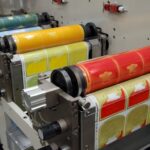Do you want to learn how to print calligraphy stickers like a pro? If yes, then you’re in the right place! With the multitude of tools and technologies available, designing and printing exquisite calligraphy stickers has become a fun and rewarding process. With its tremendous advantages and Big impact on businesses such as marketing professionals, these stickers can now be personalized to suit any need. Lets delve into this subject and uncover all the terrific ways you can create your own beautiful designs.
The world of sticker printing has seen significant advancements. If you’ve ever marveled at how others have perfected their calligraphy designs, stay tuned because this article will provide you with the step-by-step guide on how to print these eye-catching stickers effectively.

The Basics: What You Need
Before diving into how to print calligraphy stickers, its critical to familiarize yourself with the required materials. Heres a checklist of items you’ll need:
1. Printer Selection
The first critical step in this process is choosing the right printer. Check out this [printer guide](https://newprintingera.com/which-printer-is-best-for-label-printing/) to select the one that best fits your needs. Both inkjet and laser printers have their advantages.
2. Sticker Paper Types
Choosing the correct sticker paper is essential for achieving optimal print results. You can read more about the [different types of printing](https://newprintingera.com/what-are-the-different-types-of-printing/).
3. Design Software
The design software you choose will heavily influence your final product. Options range from Adobe Illustrator to Canva, depending on your skill level and budget.
Step-by-Step Guide to Printing
4. Designing Your Calligraphy
Start by creating your design. Use various design tools like Adobe Illustrator to get intricate calligraphy.
5. Preparing Your Printer
Ensure your printer is properly set up by testing on plain paper first to make sure the design is aligned correctly.
6. Printing Process
Once set, place the sticker paper in your printer and hit print. Be sure to follow your printer’s guidelines for loading specialty paper, such as sticker sheets.
7. Cutting Your Stickers
After printing, carefully cut out your calligraphy designs using a cutting tool.
Quality Assurance & Troubleshooting
8. Common Printing Issues
Ranging from poor print quality to alignment issues, many factors can affect your sticker outcome. This [article](https://www.ldproducts.com/blog/8-tips-on-how-to-print-great-stickers-from-home/) provides insightful solutions to overcome these challenges.
9. Storage and Final Touches
Store your stickers in a cool, dry place to maintain their quality and adhesive properties.
Advanced Techniques and Specialty Stickers
10. Waterproof and Weather-resistant Options
If you need waterproof stickers, special printer settings and materials will be needed. Learn more about [tagless heat transfer labels](https://newprintingera.com/what-is-tagless-heat-transfer-labels/).
11. Using Specialty Inks
Specialty inks can add a layer of elegance to your calligraphy stickers.
Strategies for Marketing Professionals
12. Utilizing Stickers in Branding
Stickers can be a powerful branding tool and can add a unique touch to marketing strategies.
13. Creating Within Budget
Planning out your material needs and designs can help you stay within your budget.
14. Large Scale Printing for Businesses
Larger print jobs may require different tools and printers. Consider using formats that align with [how big is a water bottle in inches](https://newprintingera.com/how-big-is-a-water-bottle-in-inches/) for product labels.
15. Eco-friendly Printing Options
Today, many people are switching to sustainable printing choices to reduce environmental impact.

FAQ Section
Q1: Is special ink necessary for calligraphy stickers?
While not necessary, specialty inks can add vibrancy and longevity to your stickers.
Q2: Can I use any paper for my stickers?
No, it is best to use paper intended for stickers for the best outcome.
Q3: How can I make my stickers waterproof?
To make stickers waterproof, use waterproof materials and specialty inks.






